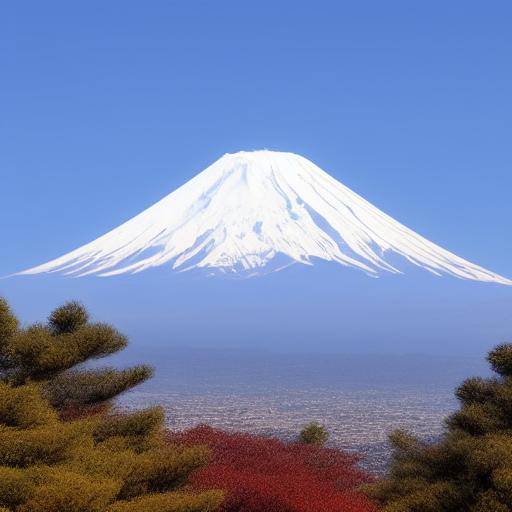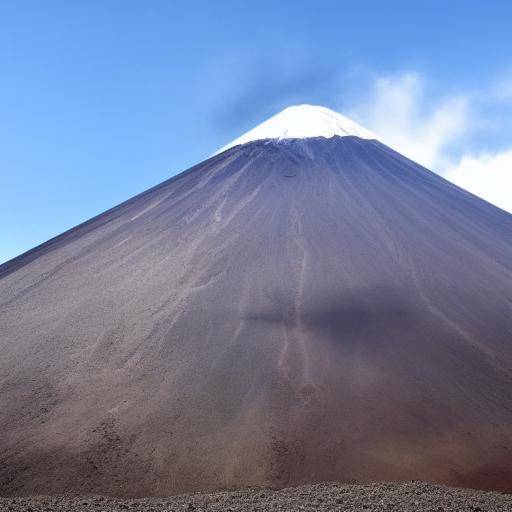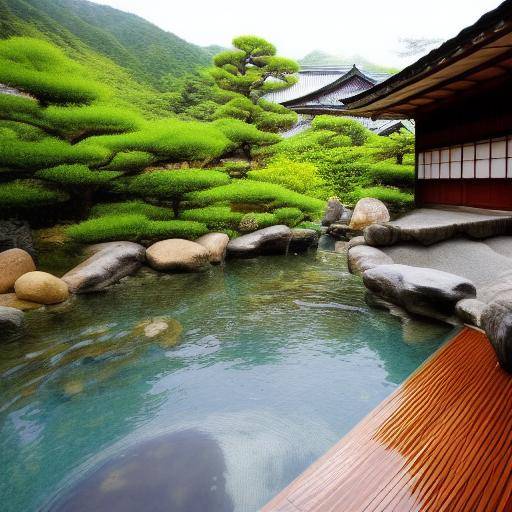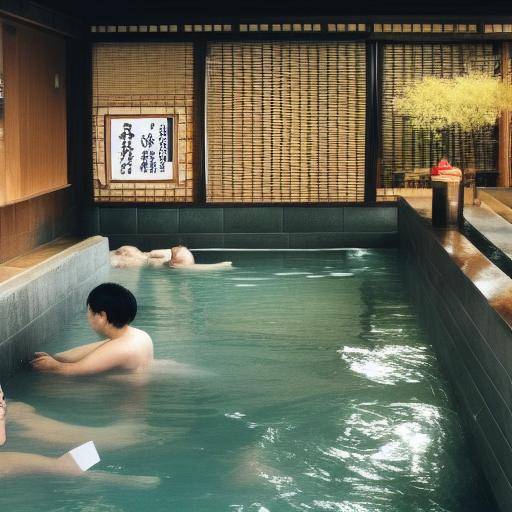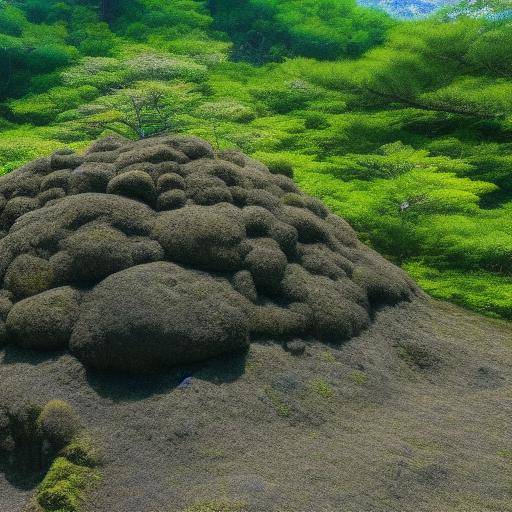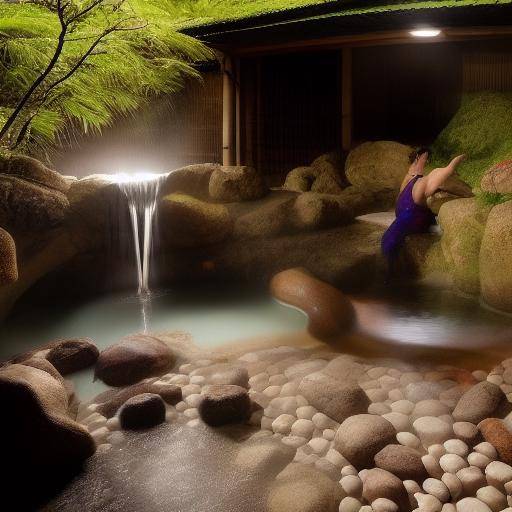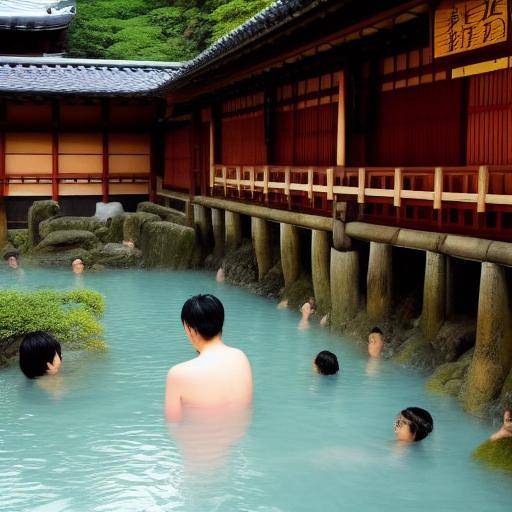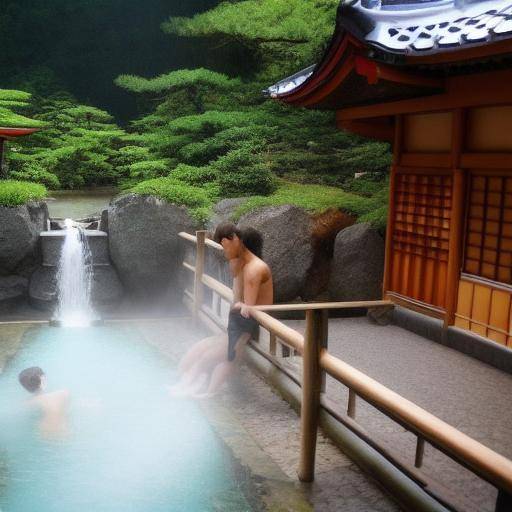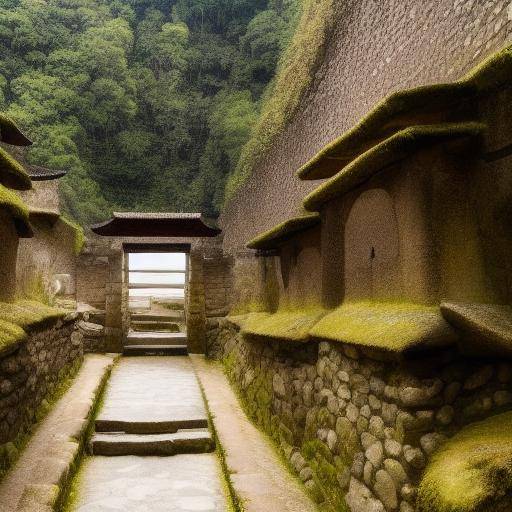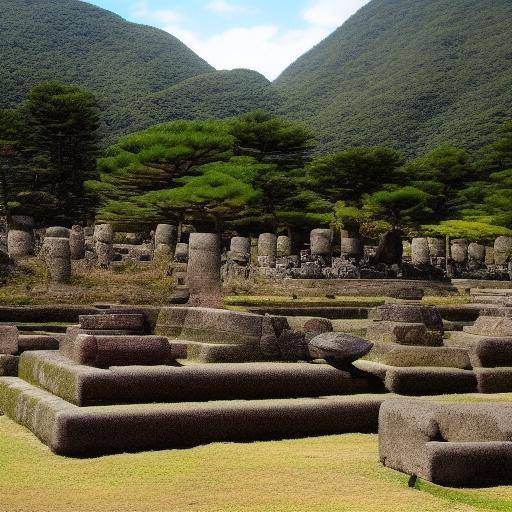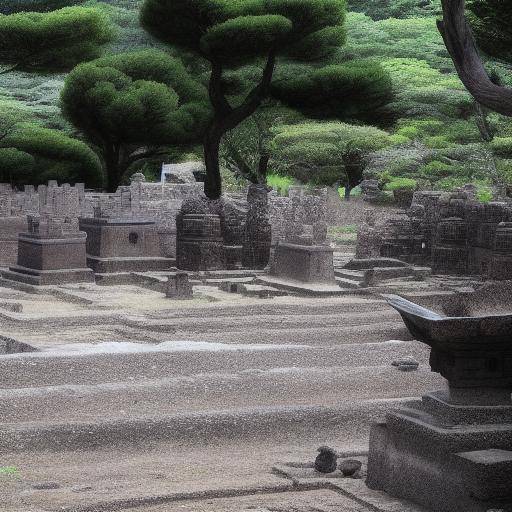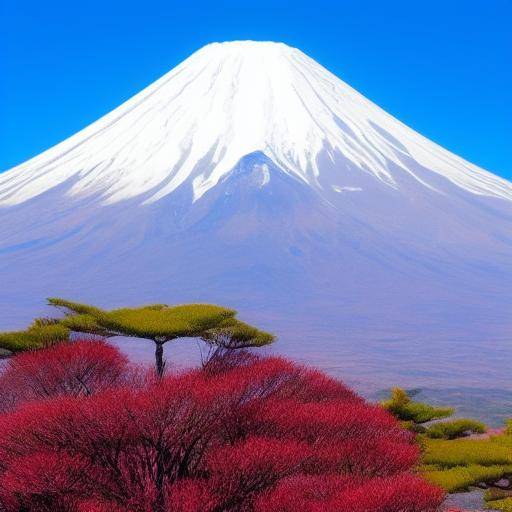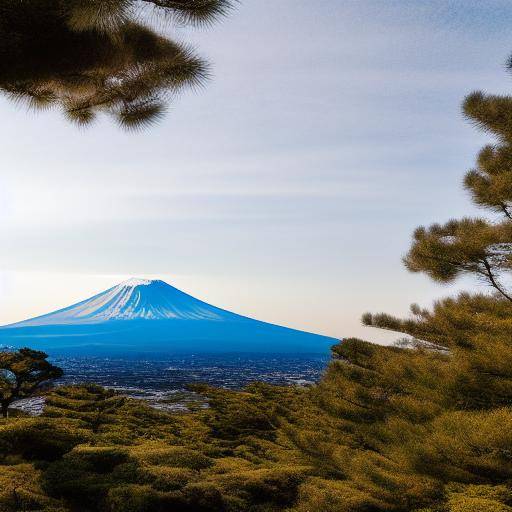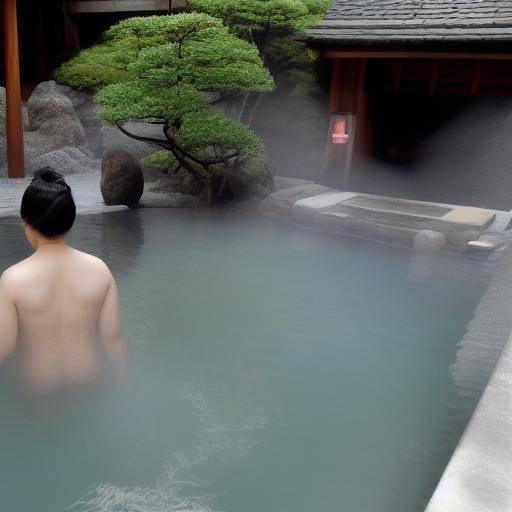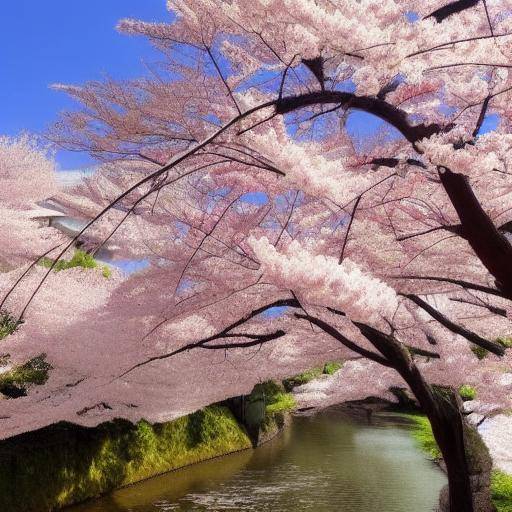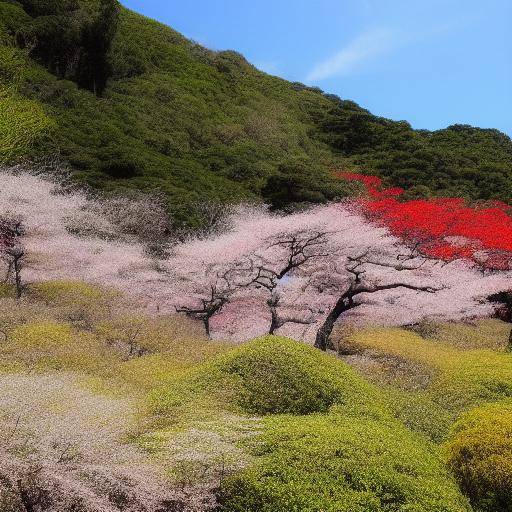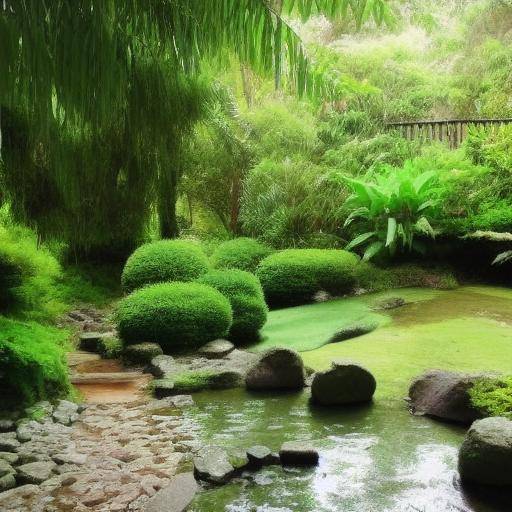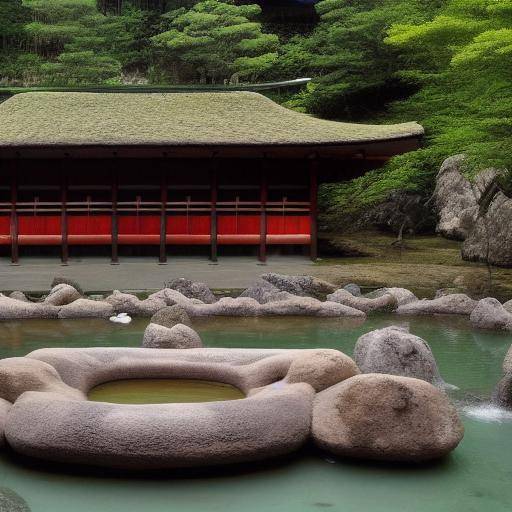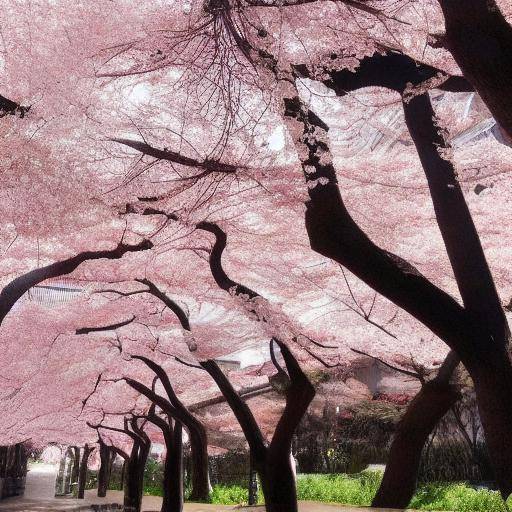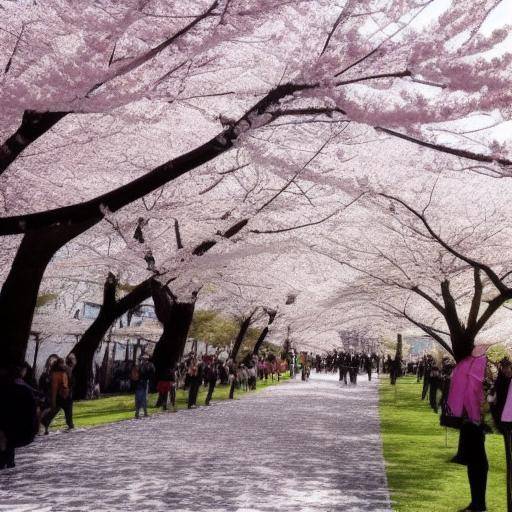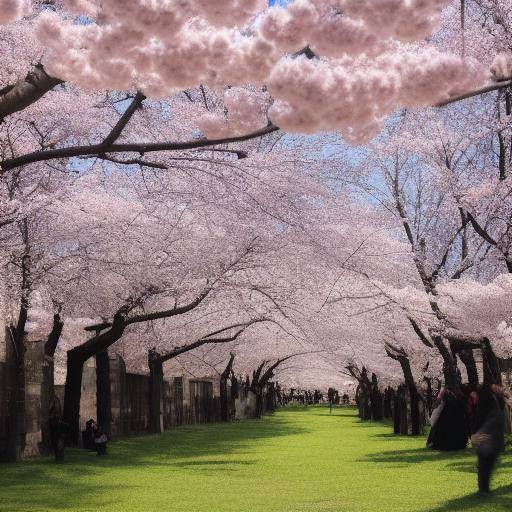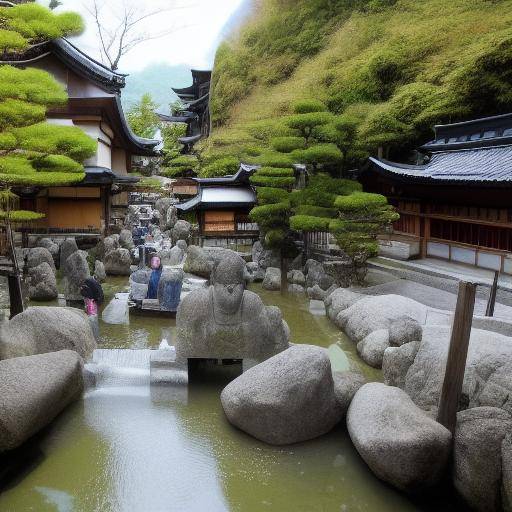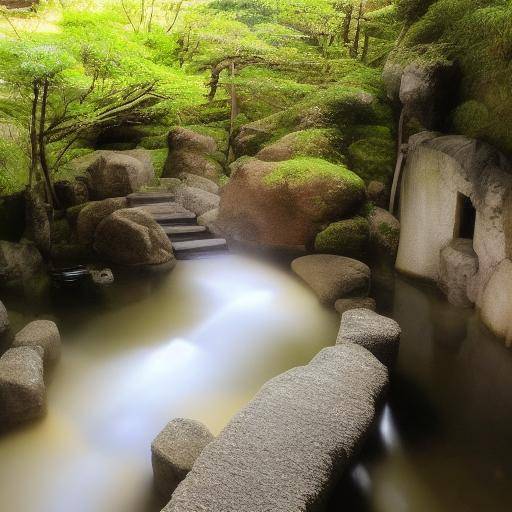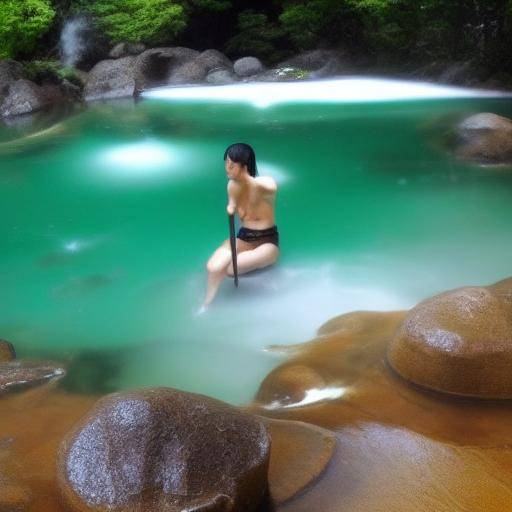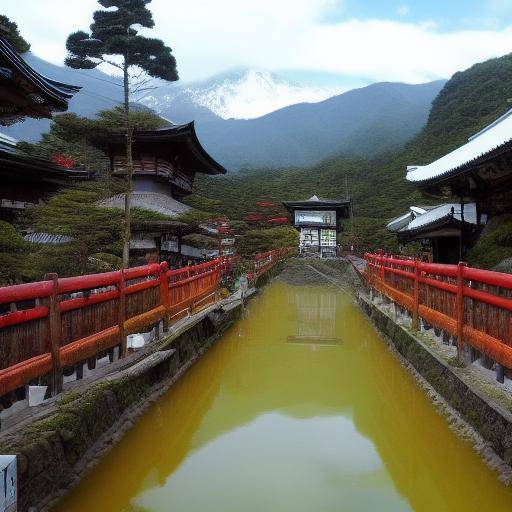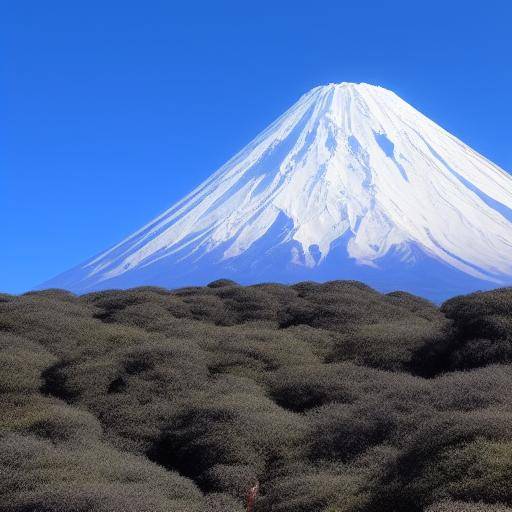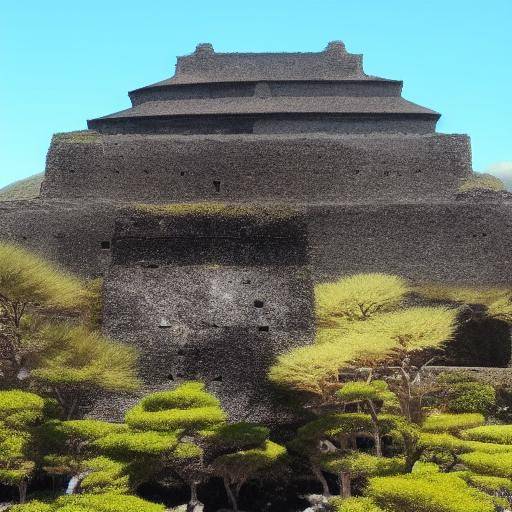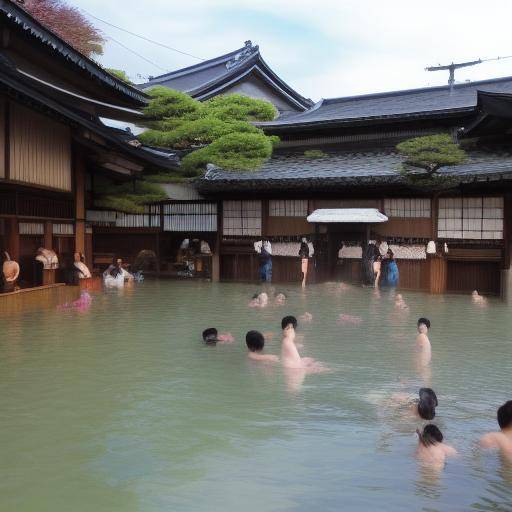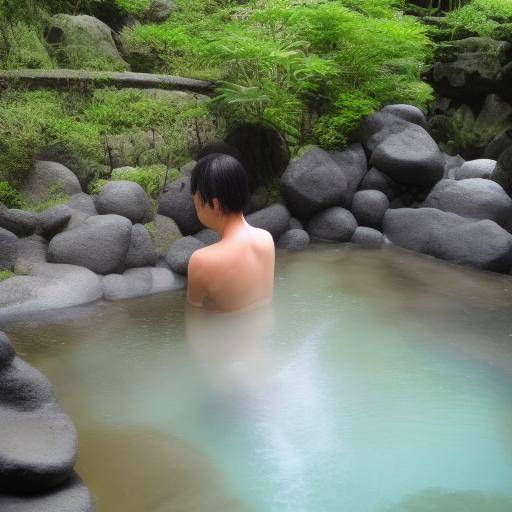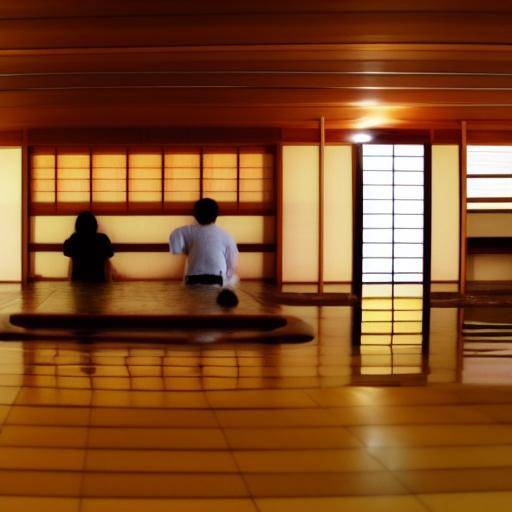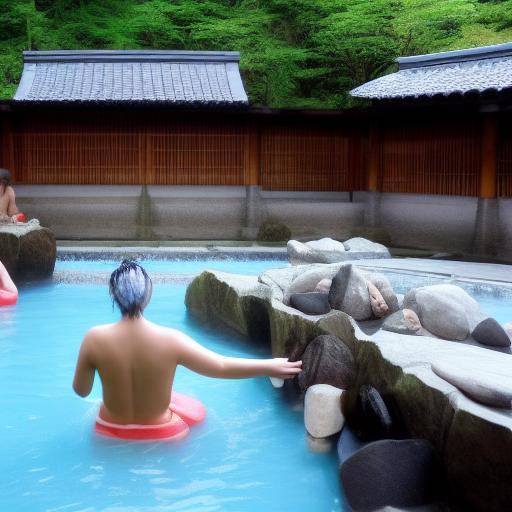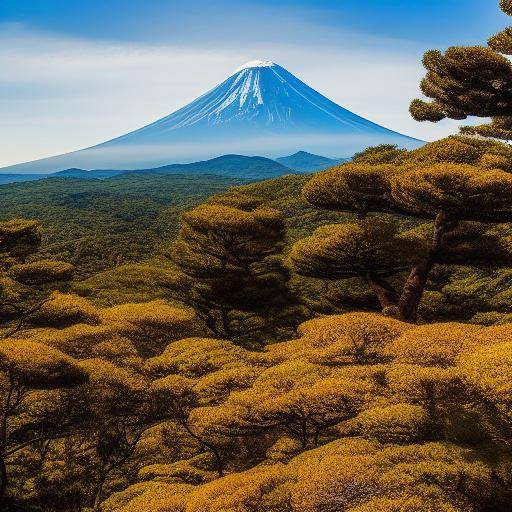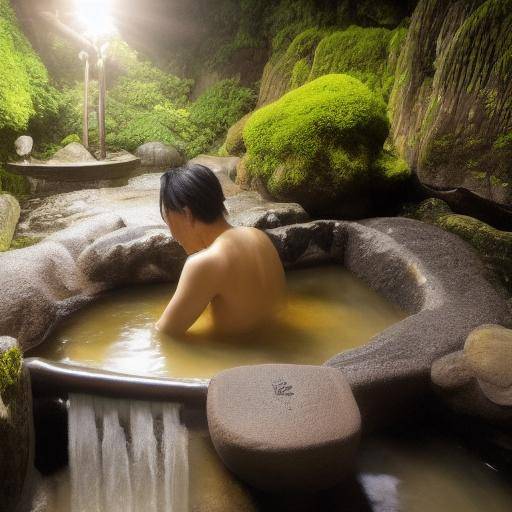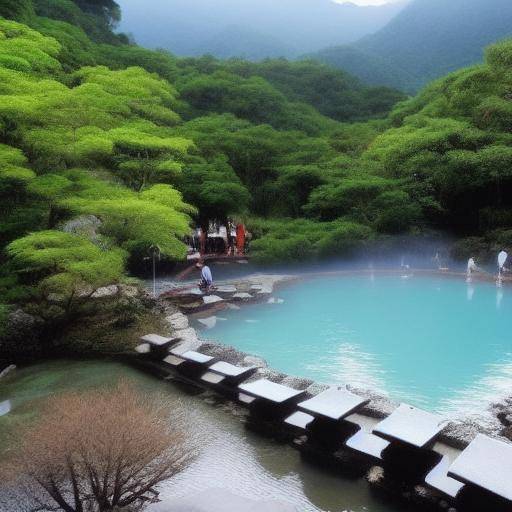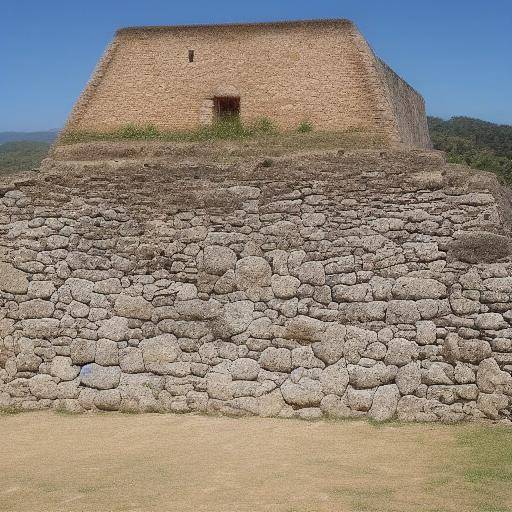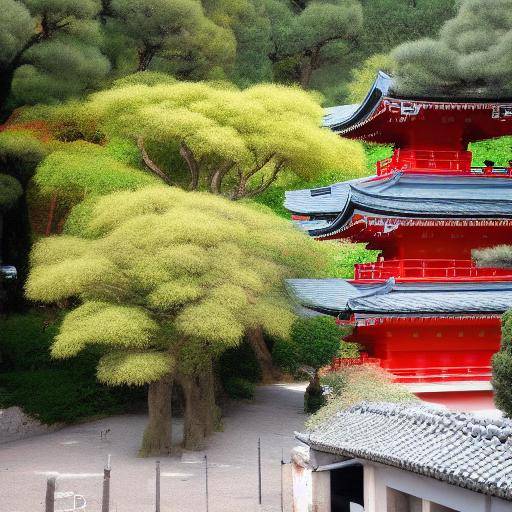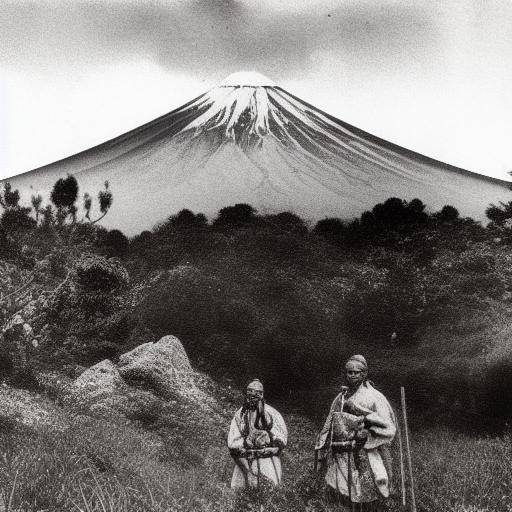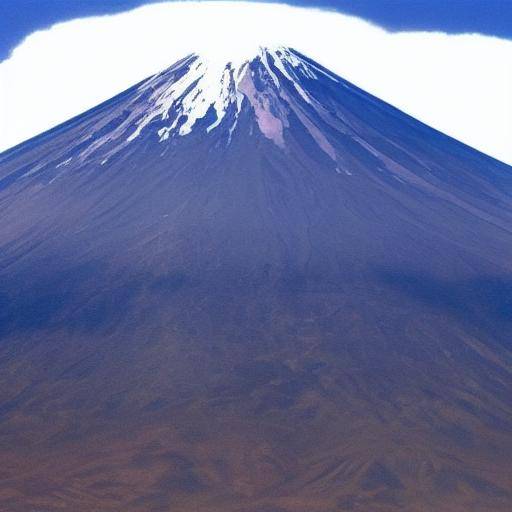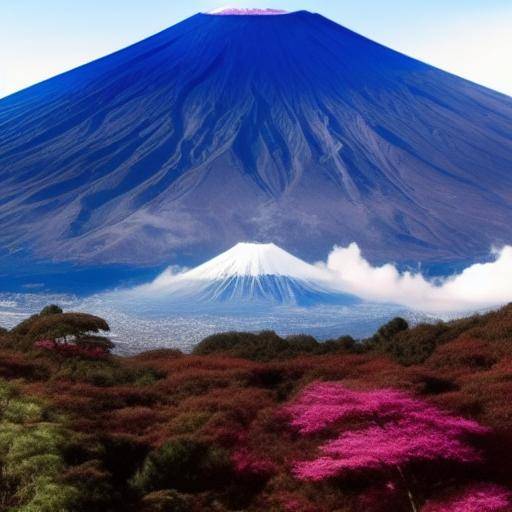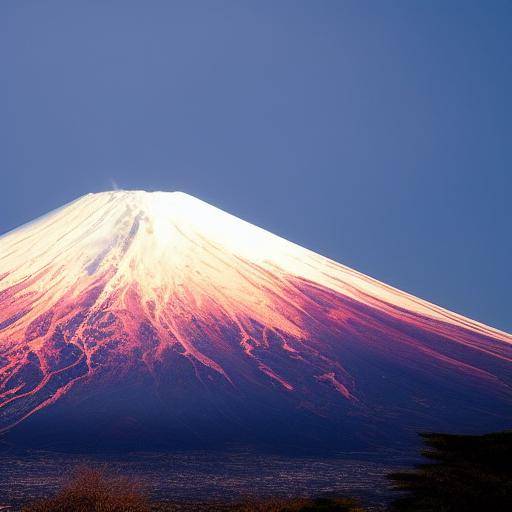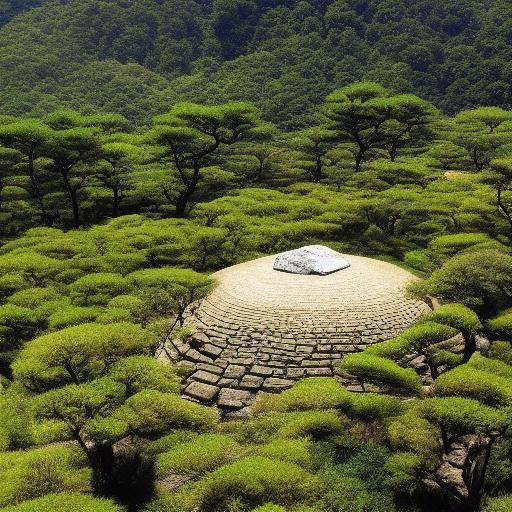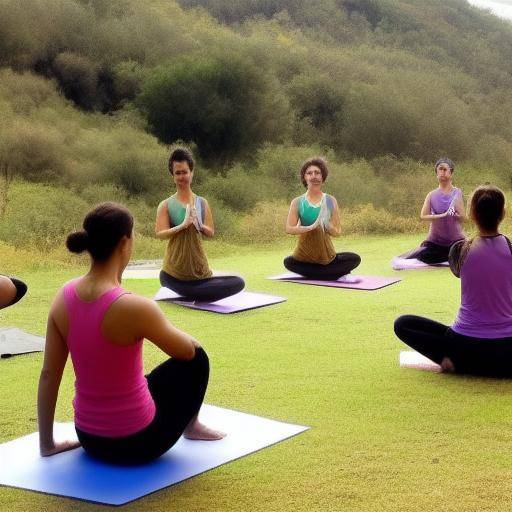
Introduction
Imagine dipping into relaxing thermal waters while contemplating a lush natural landscape. This is precisely what the onsen experience offers, an ancient tradition of Japan that combines relaxation, culture and well-being. In this article, we will thoroughly explore the rich history, therapeutic benefits, best practices and future projections of onsen in Japan. In addition, we will discover how this unique experience is an inseparable part of the rich Japanese culture, offering visitors an authentic immersion in tradition and well-being.
History and Background
The onsen, thermal baths of volcanic origin, have been an integral part of Japanese culture for centuries. The ancestral tradition of the onsen dates back to the eighth century, when the thermal baths were considered sacred and used for medicinal purposes. Over the centuries, the onsens evolved both in their cultural importance and in their therapeutic value, becoming favorite places for relaxation, reflection and well-being.
One of the important milestones in the history of the onsen was its popularization during the Edo era, when these thermal baths became popular tourist destinations for the Japanese nobility and elite. Over the centuries, the onsen have grown into number and diversity, becoming an essential part of everyday life and tourism in Japan.
Analysis in Deep
The onsen not only offer a haven of peace and relaxation, but also have numerous therapeutic benefits. The natural thermal waters of the onsen contain minerals that are believed to relieve ailments such as arthritis, circulatory problems, stress and physical fatigue. These therapeutic properties have led to a growing interest in spa medicine and have positioned the onsen as well-being destinations of international renown.
However, the maintenance and sustainable management of the onsen pose challenges. Since many onsen depend on natural sources of thermal waters, there is a need to protect and preserve the natural environment around them. In addition, onsen infrastructure and facilities require careful management to ensure adequate safety, hygiene and maintenance.
Comprehensive review
The onsen experience has spread beyond traditional thermal baths to include a variety of complementary services and activities. Currently, onsen complexes offer a wide range of treatments, from therapeutic massages and relaxation therapies to gastronomy services and luxury accommodation. This comprehensive approach has contributed to the growing popularity of onsen among national and international tourists.
Despite their undeniable appeal, the onsen also face challenges in terms of maintaining the authenticity of experience and preserving their cultural significance in a constantly evolving tourist environment. Maintaining a balance between the marketing of the onsen as tourist destinations and preserving their cultural authenticity has become an important concern for the owners and managers of these establishments.
Comparative analysis
Compared to other well-being experiences in the world, the onsens of Japan stand out for their deep cultural roots. While the thermal spas are common in many countries, the onsen offer a unique connection to the Japanese tradition, offering visitors an authentic cultural experience.
Moreover, the label and tradition surrounding the onsen contribute to their distinction. The social norms and customs associated with the use of onsen, such as personal care and consideration made by others, are an integral part of the experience, raising the visit to a deeper level than the simple enjoyment of thermal waters. This clearly differentiates the Japanese onsen from other thermal destinations in the world.
Practical Tips and Accessible Tips
If you are planning to immerse yourself in the onsen experience, consider some useful guidelines:
- Investigate the different types of onsen: there are different varieties, such as kashikiri onsen (private baths) or rotenburo (open baths).
- Learn about label and customs: it is important to respect the cultural rules and practices associated with onsen, such as washing before entering the thermal waters.
- Consider the right time: depending on the season, some onsen offer unique panoramic views, such as outdoor baths surrounded by cherry blossoms in spring or autumnal foliage.
These tips will help you maximize your onsen experience and respect Japanese culture and customs.
Industry Perspectives and Expert Reviews
Specialists in well-being and tourism have highlighted the uniqueness of the onsen experience in Japan, stressing its ability to combine physical relaxation with an authentic cultural immersion. According to the experts, the continuous popularity of the onsen is largely due to its ability to provide a sense of "alarrangement" of everyday life, allowing visitors to disconnect and recharge energies.
The experts have also emphasized the importance of preserving and promoting the authenticity of the onsen in a constantly changing tourist environment. The need to balance tourism development with cultural conservation has been a recurring theme in discussions on the future of the onsen in Japan.
Case Studies and Real Life Applications
Several onsen establishments have implemented innovative practices to maintain the authenticity of the experience while meeting the changing needs of visitors. From the adoption of ecological technologies for water and energy management to the offering of holistic welfare programs that combine traditional and modern therapies, onsen owners are demonstrating their commitment to the responsible evolution of this centuries-old tradition.
These exemplary cases highlight how adaptation to the new demands and expectations of the market can coexist with the preservation of the essence of the onsen.
Future Trends and Predictions
As well-being and sustainable tourism continue to be global trends, Japan ' s onsen are expected to continue to attract the attention of an increasingly interested international audience in genuine and meaningful experiences. The incorporation of modern approaches to sustainability and well-being in onsen management, together with the promotion of lesser known destinations, will likely contribute to the expansion and diversification of the onsen offer in Japan.
It is anticipated that the onsen will continue to evolve to adapt to the changing needs of visitors, while preserving their cultural and therapeutic essence that makes them unique in the world.
Conclusion
The onsen experience in Japan is much more than immersed in thermal waters; it is a journey to the heart of Japanese culture and tradition. Historical wealth, therapeutic benefits, current challenges and future opportunities make the waves a treasure of well-being and cultural authenticity. By exploring the onsen, visitors have the opportunity to immerse themselves in an ancestral tradition, revitalize body and mind, and appreciate Japan's uniqueness from a completely new perspective.
Frequently asked questions
What is the difference between an onsen and a sitting?
Although both are public bathrooms in Japan, the water in the onsen comes from natural thermal sources, while the seating is heated and does not contain mineral properties.
What are the therapeutic benefits of onsen?
The thermal waters of the onsen are believed to have therapeutic properties that can relieve ailments such as arthritis, circulatory problems, stress and physical fatigue.
What are the label rules when visiting an onsen?
Before entering the thermal waters, it is essential to completely wash and rinse the body in the showers available in the establishment. In addition, the privacy of other visitors should be respected and avoid taking towels to the water.
Can I visit an onsen if I have tattoos?
In Japanese culture, tattoos are often associated with mafia and, therefore, many onsen establishments have restrictions for people with tattoos. However, some places are relaxing this rule, so it is advisable to confirm the policies of the onsen in particular before the visit.
What is the ideal season to visit an onsen in Japan?
The autumn season (otoño) is especially popular to visit onsen due to the stunning views of the autumn leaves (koyo). Spring is another amazing season to visit onsen, as many outdoor baths offer wonderful views of the flowering cherry trees.
Are there traditional onsen outside of Japan?
Although the onsen tradition is distinctively Japanese, similar thermal baths exist in other countries, such as the thermal baths in Iceland, the thermal waters in Turkey and spas in Europe.
Conclusion
From historical tradition to health benefits and the projection of future trends, Japan's onsen are much more than simple thermal baths. They are carriers of a rich cultural heritage, provide a revitalizing pause of everyday life and offer visitors a deep connection with the essence of Japan. By exploring the onsen, the door opens to an experience that nourishes body, mind and soul, offering a unique journey to tradition and well-being.
With this complete guide on the Japanese onsen, we hope you will find inspiration to explore and immerse yourself in this fascinating tradition of well-being and culture.

